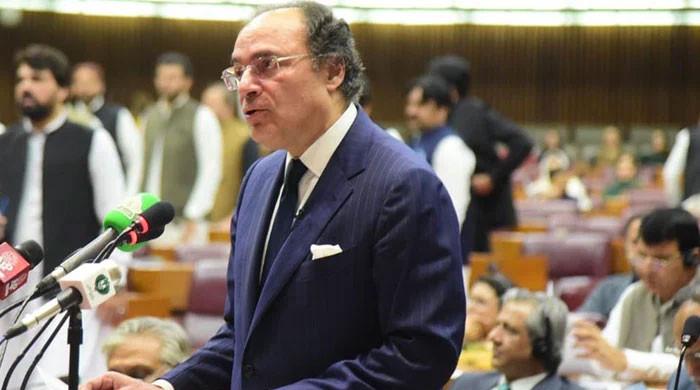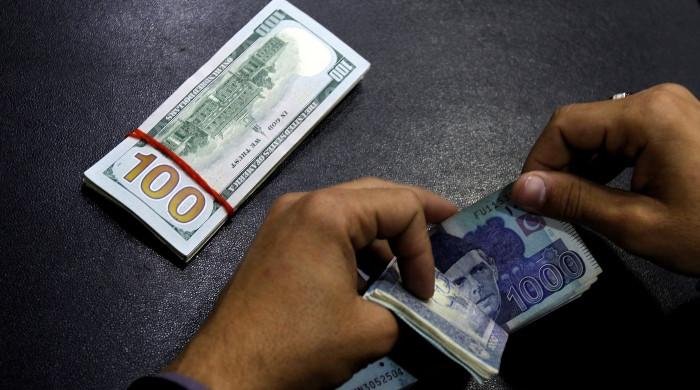Forex reserves surge to 2-month import cover, confirms SBP governor
Jameel Ahmad says central bank plans to launch fully digital banking by 2025 to enhance financial inclusion
October 02, 2024

- Liquid forex reserves now stand at $10 billion as per SBP.
- SBP chief says IMF disbursement has eased pressure on rupee.
- Ahmad says decline in inflation positively impacted monetary policy.
Pakistan’s foreign exchange reserves have surged to cover two months' worth of imports after the arrival of the first tranche from the International Monetary Fund’s (IMF) 37-month loan deal under the $7 billion Extended Fund Facility (EFF), Governor State Bank of Pakistan (SBP) Jameel Ahmed said on Wednesday.
In much-needed support for the country’s fiscally-challenged economy, the State Bank of Pakistan (SBP) received the first tranche of $1.03 billion (SDR 760 million) on Monday, September 30, 2024.
Pakistan had been working on implementing conditions deemed "strict" to complete the loan programme agreed to in July, which Prime Minister Shehbaz Sharif time and again hoped would be Pakistan's last.
The liquid reserves now stand at $10 billion, providing much-needed stability to the country’s foreign exchange position.
“The foreign exchange reserves have stabilised, and we expect further improvements,” Ahmed said speaking at a banking conference.
He highlighted that the recent IMF disbursement has eased pressure on the rupee, ensuring a smooth supply of dollars in the market.
"[Overseas workers'] remittances have increased, and the supply of dollars has improved," said Ahmed, noting that a decline in inflation has positively impacted monetary policy.
The governor expressed satisfaction over the government’s fiscal situation, which he said had also improved.
"The rate of borrowing from banks has decreased," he further stated.
Dispelling the impression of a holdup in repayments to commercial banks, Ahmad said the government was not short of funds. "We are making early repayments of bank loans," the governor said.
Ahmed also briefly outlined the central bank’s strategy to modernise Pakistan's banking sector, underlining that promoting innovation in banking could spur economic growth.
“We aim to launch fully digital banking by 2025,” he said, noting that the initiative will enhance financial inclusion and accessibility for millions of Pakistanis.
The SBP governor further revealed plans to expand Small and Medium Enterprises (SMEs) financing, with a target to increase the current volume from Rs550 billion to Rs1.1 trillion over the next five years.
This will support small and medium-sized enterprises, key drivers of economic activity in the country.
As the popularity of digital banking continues to grow in Pakistan, Ahmed acknowledged the rising risks of online fraud.
“Banks have been warned to strengthen their cybersecurity measures,” he said, stressing the importance of safeguarding the growing number of users, which currently stands at 12 million for mobile banking and was increasing at an annual growth rate of 70%.
The central bank governor pointed out that branchless banking was already serving 59 million customers, while the use of mobile and internet banking continues to surge, with internet banking growing at 30% annually.
The governor also highlighted the phenomenal success of Raast, Pakistan’s digital payments platform, which has so far processed transactions worth Rs19 trillion since its launch in 2021.
"Daily transactions on Raast now exceed 2.5 million, and the system is being linked with Middle Eastern software to facilitate low-cost remittances for overseas Pakistanis," Ahmad noted, adding, "This will make it easier and cheaper for expatriates to send money back home."
Citing the SBP's ongoing push towards a more modern, digital-driven banking environment, Governor Ahmed said that innovation was the future of banking and a key factor in Pakistan’s economic development.











